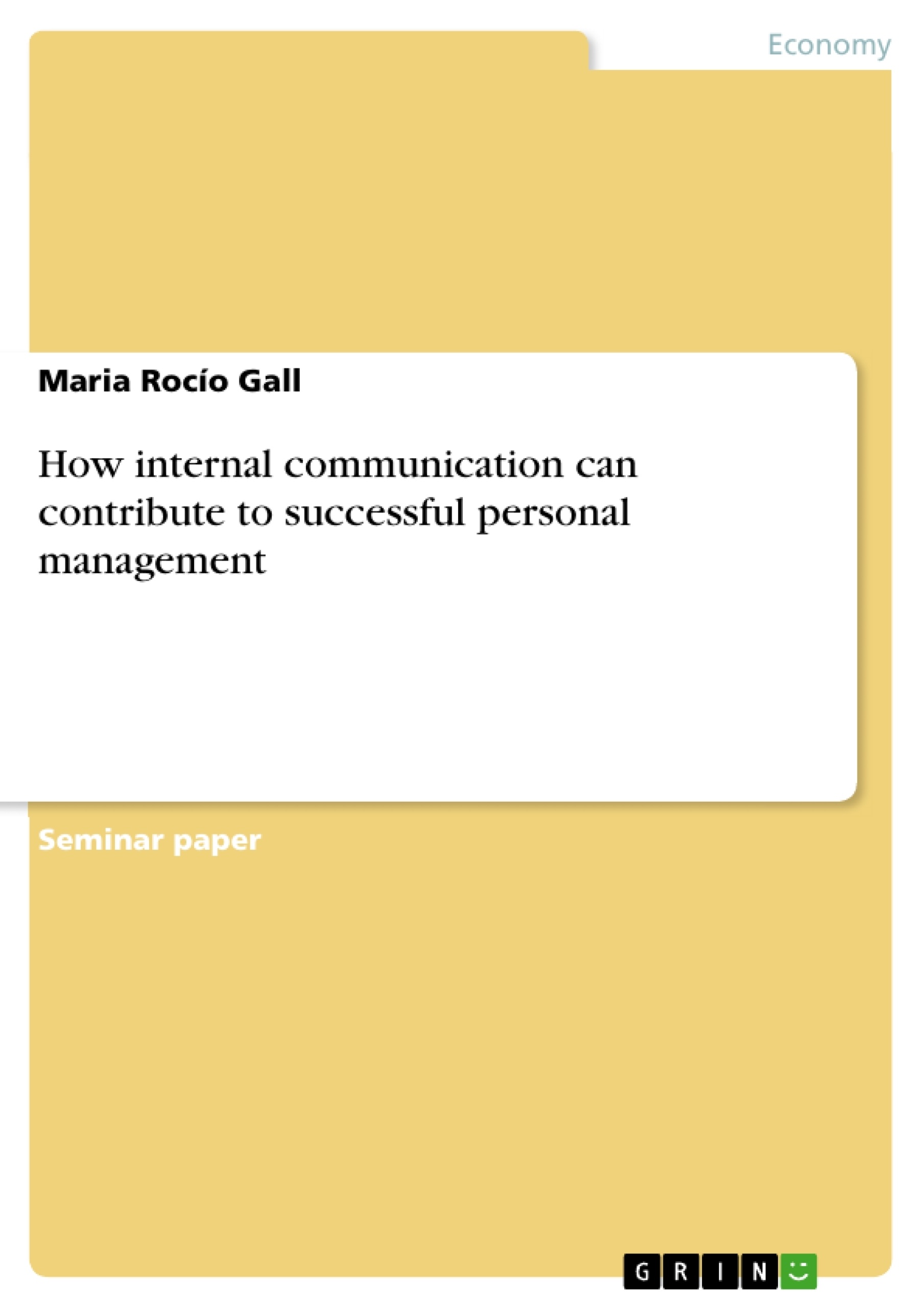1. Introduction
Nowadays with globalization human resources are becoming more and more important, less in the sense of their “performing activities “ (Gutenberg 1979) but rather in that of “dispositive activities” focussing on inventiveness, creativity and motivation. Most
problems in a corporation don’t originate from technical but from communicative causes.
Globalisation implies changes in corporation structures all over the world. Only active and fully motivated personnel can meet the challenges of mergers, hostile takeovers, acquisitions and changes of corporate structure due to new technologies. These changes require a basic improvement of corporate communication.
The aim of internal communication is to enable employees to see constant changes as an opportunity. Communication ought to be a continuous process.
To begin with, introductory explanations of human resource management and communication will be given. General conditions of successful communication will be described.
2. Internal communication
2.1. Human resource management explained
Human resource management consists in influencing the behaviour of subordinate employees. Human resource management must be aware of the fact that the human beings that are to be guided are no mere objects but personalities with ideas, moral concepts and interests on their own.
Table of Contents
List of Illustrations
1. Introduction
2. Internal communication
2.1. Human resource management explained
2.1.1. The management task of motivating employees
2.1.2. Success in human resource management
2.1.3. Leadership as a cost-factor
2.2. Explanations of communication
2.2.1. The process of communication
2.2.2. Communication with employees
2.2.3. Functions and aims of communication with employees
3 Leadership in the process of communication
3.1. Transmitting information to the members of the organisation
3.2. Satisfaction of social needs
3.3. Communication serves management
4. Successfull talk to employees
4.1. Communicative competence
4.1.1. Attention is the foundation of communication
4.1.2. Question to start communication with
4.1.3. Feedback
4.1.4. Intercultural communicative competence
4.2. Finding out about faulty communication and conflicts
5. Conditions for succesful communication
5.1. Directives of communication as part of management principles
5.2. Management, advice and training
5.3. Trust
6. Conclusion
6.1. Summary
6.2. Fazit
List of Literature
Internet source List
- Quote paper
- Maria Rocío Gall (Author), 2009, How internal communication can contribute to successful personal management, Munich, GRIN Verlag, https://www.grin.com/document/151228
-

-

-

-
Upload your own papers! Earn money and win an iPhone X. -

-
Upload your own papers! Earn money and win an iPhone X. -

-
Upload your own papers! Earn money and win an iPhone X. -

-
Upload your own papers! Earn money and win an iPhone X. -

-
Upload your own papers! Earn money and win an iPhone X. -

-
Upload your own papers! Earn money and win an iPhone X. -

-
Upload your own papers! Earn money and win an iPhone X.

